More Advance Praise for Structured Analytic Techniques for Intelligence Analysis
Heuer and Phersons handbook represents an important step forward in the evolution of the tradecraft of intelligence analysis. Although the book is dedicated to a masterful presentation of the why, when, and how of structured analysis, which will be invaluable to me as a mentor of analysts, it nonetheless recognizes the continued utility of analysis by expert judgment. The future lies in an ever-expanding role for structured analysis, and the authors wisely call for a research center to track the situational utilities of the various structured analytic techniques.
Jack Davis, Specialist in analytical tradecraft
This is a ground-breaking book that will likely become a classic. It will be valued by professional intelligence and other analysts because of the practical way it carefully structures the analytical collaborative process. While based on U.S. experience, it will also be helpful in training and standard-setting in smaller analytical organizations.
Anthony Campbell, Former head of intelligence
assessment in Canadas Privy Council Office and
Coordinator of the Community of Interest on the Practice and
Organization of Intelligence of the Global Futures Forum
The science of reasoning has grown considerably over the past 40-odd years. Among the many fascinating aspects of the human intellect is the ability to amplify our own capabilities by creating analytic tools. The tools in this book are for those whose profession often requires making judgments based on incomplete and ambiguous information. You hold in your hands the toolkit for systematic analytic methods and critical thinking. This is a book you can read and then actually apply to accomplish something. Like any good toolkit, it has some simple tools that explain themselves, some that need explanation and guidance, and some that require considerable practice. This book helps us in our quest to enrich our expertise and expand our reasoning skill.
Robert R. Hoffman, Institute for Human & Machine Cognition
Structured Analytic Techniques for Intelligence Analysis is a must-read for intel analysts and operators alike. In a field where technological solutions are often overused, the authors remind us of the importance of sound reasoning and show us how collaborative analysis can be done right. I know their techniques work, for Ive seen them in action and seen the results. Following these techniques will bring a transparent, repeatable methodology to collaborative analysisuseful in areas well beyond the U.S. Intelligence Community.
Jim Dubik, Senior Fellow at the Institute for the Study of War and
also the Institute of Land Warfare; President and CEO of Dubik Associates, LLC
Many observers, including me, have noted that intelligence analysis as practiced during the Cold War made little use of formal methods. Recent blue-ribbon panels convened to study intelligence failures have called for greater rigor, and there is no team better than the authors of this book to provide a cookbook of techniques. Heuer all but created the subject, and Pherson is a longtime practitioner, methodologist, and teacher. The book will be most valuable to practitioners, for whom it should become a touchstone for any time they need to ask themselves, what if?
Greg Treverton, Director of RANDs Center for Global Risk and
Security; former Vice Chair of the National Intelligence Council
Seeking to overcome the perceptual blocks and analytic pathologies identified by Richards Heuer in his seminal work The Psychology of Intelligence Analysis, this is the most constructive and probably the most important book on intelligence analysis ever written. It should be compulsory reading for all analysts in the Intelligence Community as well as all future analysts. Systematic adoption of the structured analytic techniques identified in this volume will not only improve the quality of analysis but also make it less likely that the United States will be the victim of a strategic surprise. The authors have developed techniques that, if put into practice, might take many analysts out of their comfort zones, but will significantly enhance the value and impact of intelligence products.
Phil Williams, Posvar Chair of International
Security Studies, Graduate School of
Public and International Affairs, University of Pittsburgh
When it comes to intelligence analysis, Randy Pherson has no equal. He kept an audience of 150 of our clients spellbound for six hours.
Kiril Sokoloff, President, 13D Research (USVI) LLC
STRUCTURED ANALYTIC
TECHNIQUES
for
INTELLIGENCE ANALYSIS

STRUCTURED ANALYTIC
TECHNIQUES
for
INTELLIGENCE ANALYSIS
By
Richards J. Heuer Jr.
and
Randolph H. Pherson

CQ Press
2300 N Street, NW, Suite 800
Washington, DC 20037
Phone: 202-729-1900; toll-free, 1-866-4CQ-PRESS (1-866-427-7737)
Web: www.cqpress.com
Copyright 2011 by CQ Press, a division of SAGE. CQ Press is a registered trademark of Congressional Quarterly Inc.
All rights reserved. No part of this publication may be reproduced or transmitted in any form or by any means, electronic or mechanical, including photocopy, recording, or any information storage and retrieval system, without permission in writing from the publisher.
Versions of twelve of the analytical techniques published in this volume (ACH, alternative futures analysis, brainstorming, deception detection, devils advocacy, indicators, key assumptions check, outside-in thinking, quadrant crunching, red cell analysis, team a/team b analysis and debate, and what if? analysis) were published by Randolph H. Pherson in The Handbook of Analytical Techniques (2005) on behalf of the government under contract number 2003*N(Y)481500*000. Techniques published here under those names have been substantially refocused, refined, and improved.
Cover design: Jeffrey Everett/El Jefe Designs
Cover image: istock.com
Interior design: Judy Myers
Composition: C&M Digitals (P) Ltd.
 The paper used in this publication exceeds the requirements of the American National Standard for Information SciencesPermanence of Paper for Printed Library Materials, ANSI Z39.481992.
The paper used in this publication exceeds the requirements of the American National Standard for Information SciencesPermanence of Paper for Printed Library Materials, ANSI Z39.481992.
Printed and bound in the United States of America
14 13 12 11 10 1 2 3 4 5
Library of Congress Cataloging-in-Publication Data
Heuer, Richards J., Jr.
Structured analytic techniques for intelligence analysis / by Richards J. Heuer, Jr., and Randolph H. Pherson.
p. cm.
Includes bibliographical references.
ISBN 978-1-60871-018-8 (alk. paper)
1. Intelligence serviceUnited States. 2. Intelligence serviceMethodology. I. Pherson, Randolph H. II. Title.
JK468.I6H478 2010
327.12dc22
2009033571
CONTENTS
FIGURES
FOREWORD
John McLaughlin
Senior Research Fellow, Paul H. Nitze School of Advanced International Studies, Johns Hopkins University
Former Deputy Director, Central Intelligence Agency and Acting Director of Central Intelligence
As intensively as Americas Intelligence Community has been studied and critiqued, little attention has typically been paid to intelligence analysis. Most assessments focus on such issues as overseas clandestine operations and covert action, perhaps because they accord more readily with popular images of the intelligence world.
Next page


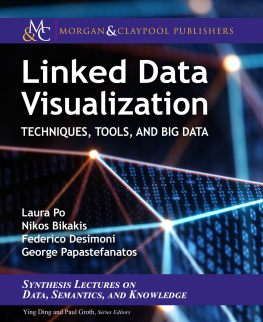
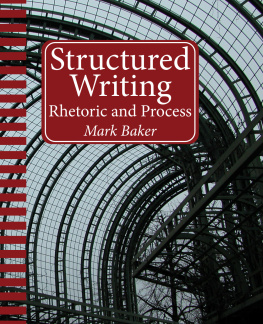
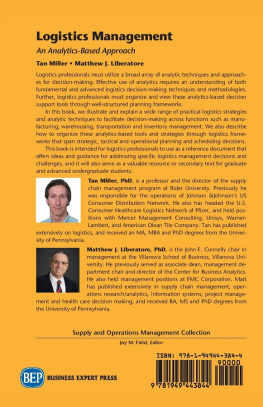
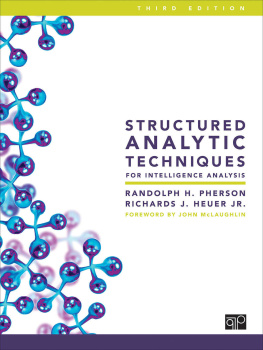
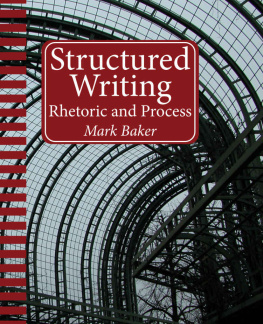
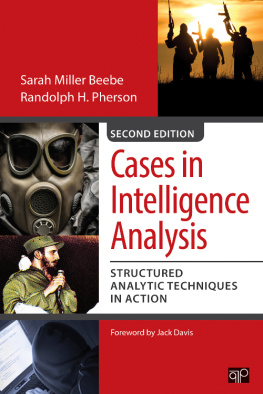
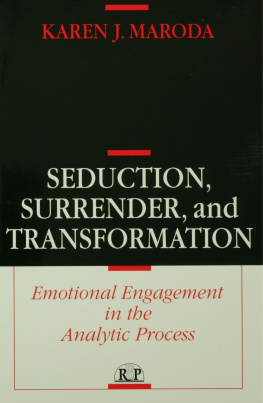
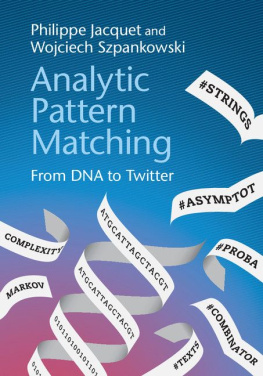
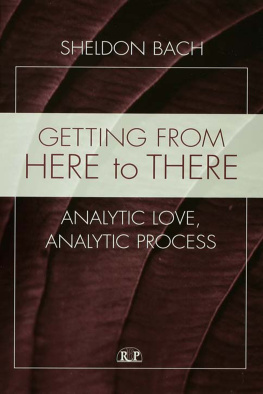


 The paper used in this publication exceeds the requirements of the American National Standard for Information SciencesPermanence of Paper for Printed Library Materials, ANSI Z39.481992.
The paper used in this publication exceeds the requirements of the American National Standard for Information SciencesPermanence of Paper for Printed Library Materials, ANSI Z39.481992.